High-grade pancreatic intraepithelial lesions: prevalence and implications in pancreatic neoplasia
Jean R Park, Feng Li, Veeral M Oza, Brett C Sklaw, Kevin M Cronley, Michael Wellner, Benjamin Swanson and Somashekar G Krishna
Columbus, USA
High-grade pancreatic intraepithelial lesions: prevalence and implications in pancreatic neoplasia
Jean R Park, Feng Li, Veeral M Oza, Brett C Sklaw, Kevin M Cronley, Michael Wellner, Benjamin Swanson and Somashekar G Krishna
Columbus, USA
BACKGROUND: High-grade pancreatic intraepithelial neoplasia (PanIN-3), a precursor of pancreatic ductal adenocarcinoma (PDAC), is not universally detected in resected pancreatic neoplasms. We sought to determine the prevalence and prognostic relevance of PanIN-3 lesions in primary surgical resections of PDACs and intraductal papillary mucinous neoplasms (IPMNs).
METHODS: A retrospective review of a tertiary care center pathology database (1/2000-6/2014) was performed. Demographics, imaging, pathology, disease-recurrence, and survival data were reviewed.
RESULTS: A total of 458 patients who underwent primary pancreatic resection were included. “PanIN-3” lesions were found in 74 (16.2%) patients who either had PDAC (n=67) or main duct (MD)-IPMN (n=7). Among IPMN-MDs, PanIN-3 lesions were exclusively found in those with pathological evidence of chronic pancreatitis. For PDACs, the median overall survival (OS) for pancreata with PanIN-3 lesions was significantly better than those without (OS 1.12 years, interquartile range [IQR] 0.72, 2.05 years vs OS 0.86 years, IQR 0.64, 1.60 years respectively; P=0.04). Multivariate Cox regression analysis demonstrated that the presence of PanIN-3 lesions was associated with a reduced risk of death (HR=0.43; 95% CI: 0.23-0.82; P=0.01).
CONCLUSIONS: Following primary resection of pancreatic adenocarcinoma, the lower survival observed in patients without PanIN-3 lesions might suggest a state of complete or accelerated transformation. Further investigations are necessary to validate these findings that might impact disease prognosis and management.
(Hepatobiliary Pancreat Dis Int 2017;16:202-208)
pancreatic intraepithelial neoplasia;
intraductal papillary mucinous neoplasms;
pancreatic neoplasia;
pancreatic ductal adenocarcinoma
Introduction
Among gastrointestinal malignancies, pancreatic
adenocarcinoma has the second highest inci
dence rate behind colon cancer. Unlike colon cancer, which has seen a significant improvement in the 5-year survival rate from 51% to 65% over the last 40 years, the survival rate in pancreatic cancer has remained dismally low with a marginal improvement from 2% to 6% in the same time period.[1]Surpassing breast, prostate, and colorectal cancers, pancreatic cancer is projected to become the second leading causes of cancer-related death by 2030.[2]The advancements in colon cancer survival can be attributed to increased screening with colonoscopy and close monitoring of precancerous and non-invasive lesions.[3-5]Unfortunately, while precursor lesions for pancreatic cancer have been identified, an effective screening modality has not yet been determined.
For pancreatic adenocarcinoma, several precursor lesions have been recognized including epithelial and cystic neoplastic lesions. Cystic precursor lesions have been classified and include intraductal papillary mucinous neoplasms (IPMNs) and mucinous cystic neoplasms (MCNs).[6]Epithelial adenocarcinoma precursor lesionswere first described in 1905.[7]The lesions have since been defined in a multitude of terms including metaplasia, hyperplasia, and dysplasia in the literature. In 2001, a new uniform nomenclature system was put forth by international consensus that classified these lesions as pancreatic intraepithelial neoplasia (PanIN).[8]PanINs were then divided into 3 major subgroups: PanIN-1, PanIN-2, and PanIN-3. Like colon cancer, PanINs demonstrate a stepwise progression from a benign lesion to invasive pancreatic ductal adenocarcinoma (PDAC).[9]Two recent publications, however have suggested an association of higher grades of PanIN lesions in resected pancreata (part of the pancreas), with better overall survival.[10,11]The objective of our study was to evaluate the prevalence and significance of PanIN-3 lesions in PDACs and IPMNs and the impact on overall survival.
Methods
Patients
Our study is a retrospective pathology database analysis of all pancreatic resections between January 2000 and June 2014 at The Ohio State University Wexner Medical Center. An approval from the Institutional Review Board (IRB #: 2013C0044) was obtained prior to data collection and analysis. Inclusion criteria included all adult patients with surgical resections involving the pancreas for neoplastic lesions. Only patients with comprehensive pathology reports and where specimen was available for review were included in the final analysis. An independent pathologist was assigned for reviewing cases where pathology report was incomplete. Patients who received neo-adjuvant chemotherapy were excluded from the study (Fig. 1).
Variables
A comprehensive data collection involving patient history, demographics, imaging, endoscopic ultrasound (EUS), laboratory, histopathology, operative report, and follow-up were collected using the institution’s electronic medical record system. When reviewing the pathology report, the highest PanIN grade documented was assigned to each patient. Furthermore, histopathological evidence of chronic pancreatitis, lymphovascular invasion (LVI), perineural invasion (PNI), tumor differentiation, and post-resection pathologic staging were included. The location of the resected pancreas lesion was determined through the patient’s imaging, operative, pathology, and EUS report.
Definitions
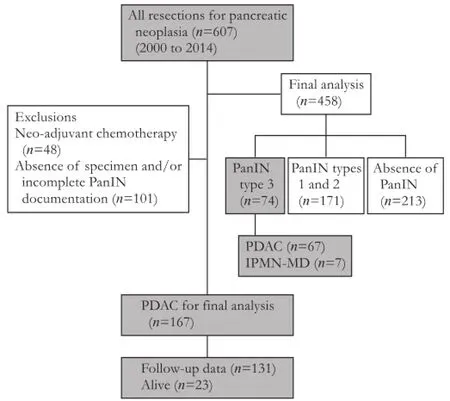
Fig. 1. Study schema. PanIN: pancreatic intraepithelial neoplasia; PDAC: pancreatic ductal adenocarcinoma; IPMN-MD: intraductal papillary mucinous neoplasm-main duct.
Our institution utilized the PanIN definitions set forth by international consensus in 2001.[8]In accordance with 2001 guidelines, PanIN is defined as neoplastic epithelial proliferations in smaller caliber pancreatic ducts that measure less than 0.5 cm. PanIN has been divided into three major grades. PanIN-1 lesions are defined as flat, papillary, micropapillary, or basally pseudostratified lesions made of tall columnar cells with nuclei that are round to oval in shape. PanIN-2 lesions are defined as either flat or papillary epithelial lesions with nuclear atypia. PanIN-3 lesions are papillary, micropapillary, or rarely flat epithelial lesions with significantly more nuclear atypia including loss of nuclear polarity and dystrophic goblet cells. Cribiforming and luminal necrosis is also noted. While PanIN-3 does resemble pancreatic adenocarcinoma, there is no invasion through the basement membrane.[11,12]
IPMNs and MCNs were defined as cystic mucinproducing pancreatic lesions per the World Health Organization (WHO) guidelines. Ovarian-type stroma and lack of communication with the main pancreatic duct is considered a distinguishing feature of MCN and assists in differentiating the two cystic lesions. IPMNs have conventionally been categorized as main duct (IPMN-MD), branch duct (IPMN-BD), and mixed lesions based on imaging or pathologic grossing and histology.[6]
The resection margin status was documented as per the American Joint Committee on Cancer guidelines. R0 resection was defined as a grossly complete resection with microscopically negative margins; an R1 resection was defined as a grossly complete resection with microscopically positive margins; and an R2 resection waswhere macroscopically visible tumor was not removed.[13]
Statistical analysis
Categorical variables were tabulated as numbers and percentages of patients, and continuous variables were summarized as mean and standard deviations (SD). All statistical analyses were performed using SPSS statistical package, version 22.0 (IBM Corporation, Somers, NY). To compare differences in continuous variables between groups, a t test was performed. Chi-square test was used for analysis of categorical data. Survival curves were examined by the Kaplan-Meier method, and significance was examined using the log-rank test.
To determine the significant predictors of PanIN-3 in patients with PDAC, a univariate model was analyzed. Overall survival (OS) was defined as the time between pancreatic surgery and death. To minimize the influence of postoperative mortality on results of long-term survival, patients alive at 30 days postoperatively were included in the analysis. A minimum time period of 1-year from date of surgery had elapsed prior to data-analysis. A Cox proportional hazards regression model was constructed to estimate significance of PanIN-3 lesions on OS. Following a univariable analysis, all significant predictors with a P value of ≤0.05 were included in the multivariable model. To avoid over fitting, a forward conditional analysis was performed. The following variables were analyzed: performance status, presence of diabetes, CA19-9 levels, presence of LVI or PNI, tumor differentiation, T stage, N stage, resection margin, and absence of PanIN-3 lesions. The most representative model was selected. A subgroup analysis was performed for all R0 resections as well. A P value of <0.05 was considered to be statistically significant. Results were presented as hazard ratios (HR) and 95% confidence interval (CI).
Results
A total of 607 pancreatic resections for all causes were reviewed (Fig. 1). After exclusions, a total of 458 pancreatic resections were reviewed. A majority of the resections were pancreaticoduodenectomies (n=287, 62.7%), followed by subtotal or distal pancreatectomies (n=167, 36.5%), total pancreatectomies (n=15, 3.3%), central pancreatectomies (n=6, 1.3%), and enucleations (n=2, 0.4%) in descending frequency. While most of the lesions were located in the head or uncinate process or genu of the pancreas (n=292, 63.8%), some were located in the body (n=57, 12.4%), tail (n=118, 25.8%), and involved the entire main pancreatic duct (n=10, 2.2%; IPMN-MD).
Definitive pathological diagnosis was reviewed in 458 resections, among which 245 (53.5%) pancreata had PanIN lesions. The most common surgically resected neoplastic lesions included PDAC (36.5%), IPMN (16.6%), and neuroendocrine tumor (NET, 9.0%) (Table 1). Nearly equal numbers (3%-5%) of MCN, serous cystadenomas, and chronic pancreatitis masquerading as pancreatic masses were observed. PanINs were most prevalent in PDACs and were detected in 71.9% (120 of 167) of PDAC lesions.
High-grade or PanIN-3 lesions were exclusively pres-ent in PDAC and IPMN-MD (Table 1). A dominant proportion (67 of 74; 90.5%) of these lesions were observed in PDACs (P<0.001).

Table 1. Histologic characteristics and presence of PanIN-type lesions in all resected pancreata
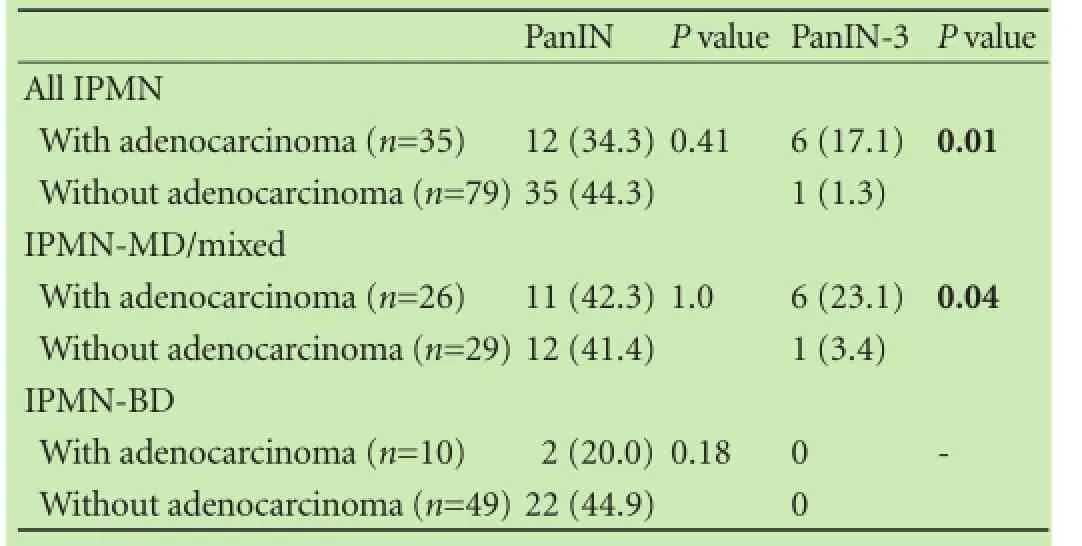
Table 2. Pancreatic intraepithelial neoplasia lesions in intraductal papillary mucinous neoplasms (n, %)
Predictably, PanIN-3 lesions were not observed in any of the benign diagnoses (chronic pancreatitis) or neoplastic lesions without the main pancreatic duct involvement (serous cystadenoma, MCN, solid pseudopapillary tumor, NET, and IPMN-BD).
PanIN in intraductal papillary mucinous neoplasms
PanIN-3 lesions were exclusively seen in patients with IPMN-MD or IPMN-mixed type lesion (P=0.04) (Table 2). Subgroup analysis revealed that all PanIN-3 lesions (n=7, 100%) were predominantly found in chronic pancreatitis (P=0.04). Furthermore, patients with PanIN-3 frequently presented with weight loss (44% vs 7%, P=0.04). Among IPMN-MD/mixed type, PanIN-3 does not affect lesions, demographics, lesion size, focality, LVI, PNI, and OS. Specifically, for 21 patients with adenocarcinoma and IPMN-MD, follow-up and survival data was available in 11 patients. The median survival for patients with PanIN-3 lesions (n=2) was 37 months whereas for those without PanIN-3 (n=9) was 11 months (P>0.05).
PanIN-3 in PDAC
PanIN-3 lesions were present in 40.1% (67 of 167) resections of PDAC. Notably, the presence of PanIN-3 did not influence the outcome of fine needle aspiration (positive yields of 46/58 vs 34/46, P=0.64). The demographics, clinical features, laboratory and pathological characteristics, and tumor stage comparing PDACs with and without PanIN-3 lesions are shown in Table 3. PanIN-3 lesions were more prevalent among Caucasians (P=0.02).
Comprehensive follow-up data were available in 131 (78.4% of 167) patients (Fig. 1). A total of 108 (82.4%) patients died during the study. We excluded 2 patients who died within 30 days after pancreatic resections as mortality was assumed to be attributable to their operative complications. The median OS for 129 patients was 1.01 years (interquartile range [IQR] 0.65-1.70 years). Eight patients died between the 30- and 90-day postoperation. Two of these patients suffered from prolonged complications associated with the surgery. An additional 2 patients had comorbidities that contributed to their mortality following their preceding surgery. There was no statistical difference observed between the 30 and 90 day operation-related mortality. The median OS was 1.12 years (IQR 0.72, 2.05 years) in PDAC patients with PanIN-3 lesions and 0.86 years (IQR 0.64, 1.60 years) in those without (P<0.05); Fig. 2 depicts the Kaplan-Meier OS curves. Recurrence rate was 67.3% (68/101) pancreata. Analysis of presence of PanIN or type of PanIN (PanIN-3 vs others) did not reveal any significant difference in predicting recurrence in PDAC (P=0.43). Furthermore, the presence of PanIN-3 did not influence the resection margin (R0=46.7%; R1=27.3%; R2=50%; P=0.15).
Multivariate Cox regression analysis demonstratedthat “presence” of PanIN-3 lesions decreased mortality (HR=0.43; 95% CI: 0.23-0.82; P=0.01; Table 4). A subgroup analysis of R0 resections also revealed similar results for presence of PanIN-3 lesions (HR=0.41; 95% CI: 0.17-0.95; P<0.04).
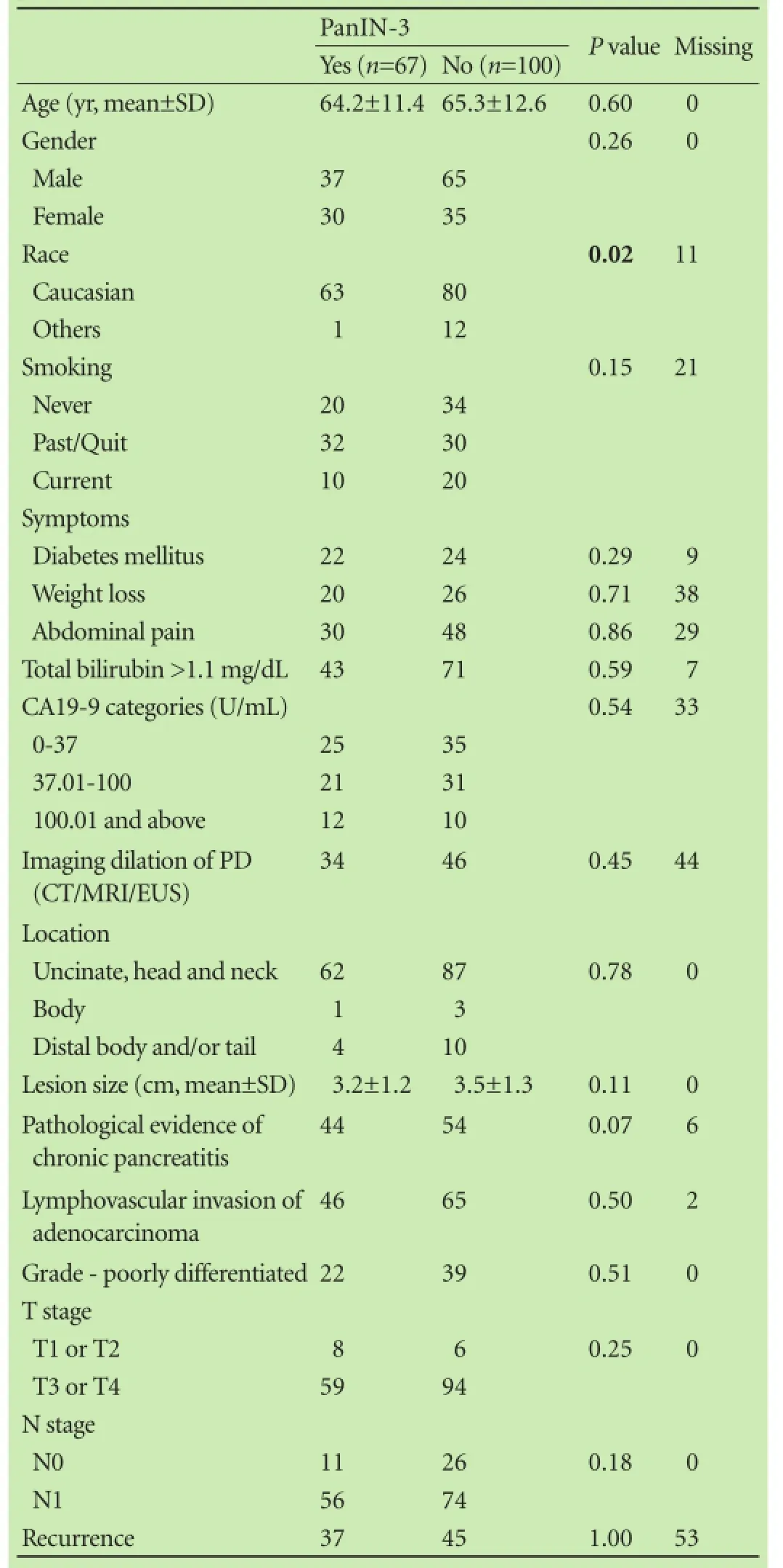
Table 3. Pancreatic intraepithelial neoplasia (PanIN) type-3 in pancreatic ductal adenocarcinoma
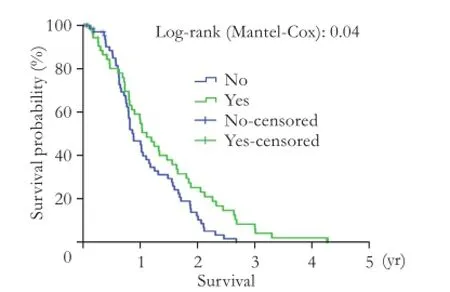
Fig. 2. Kaplan-Meier survival curves for patients with pancreatic ductal adenocarcinoma: comparison of overall survival in pancreata with and without PanIN-3 lesions. PanIN: pancreatic intraepithelial neoplasia.
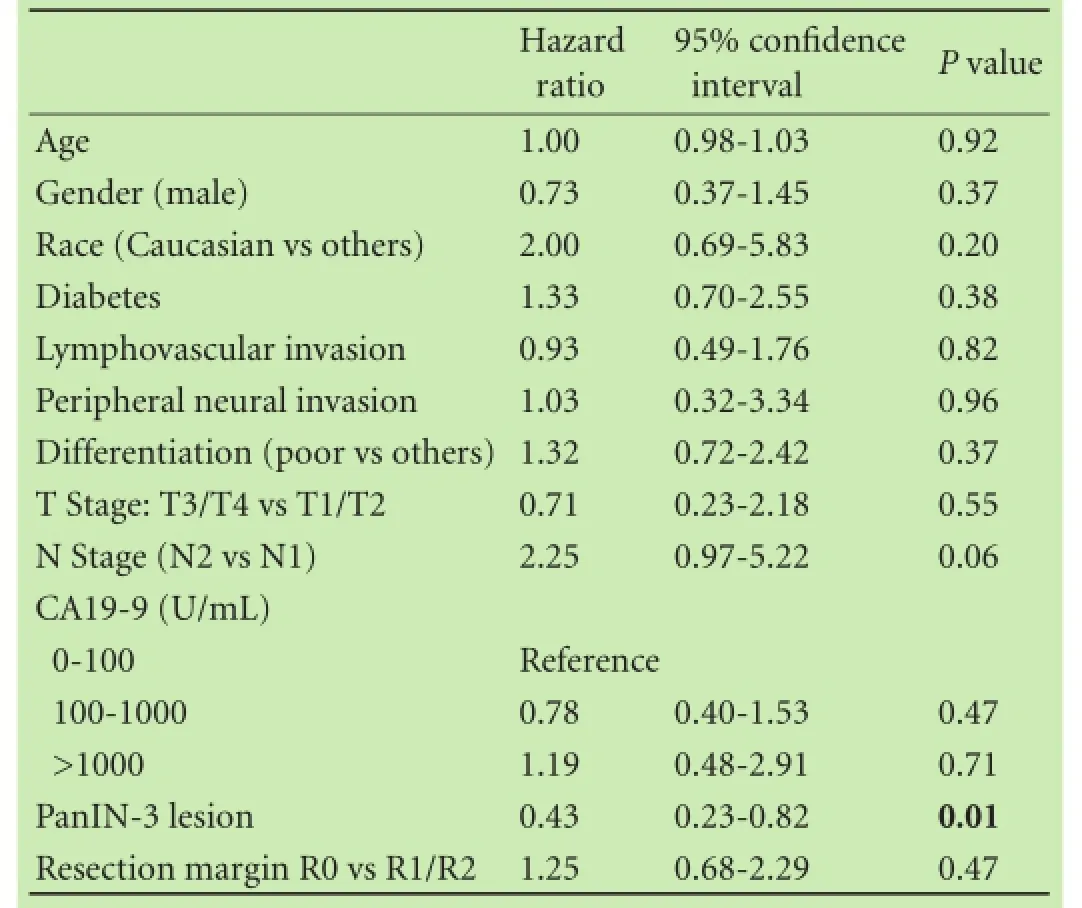
Table 4. Predictors of overall survival in pancreatic ductal adenocarcinoma: Cox regression analyses*
Discussion
The present study demonstrated that PanIN-3 (highgrade) lesions were exclusively found in PDACs and MD/mixed IPMNs. After controlling for multiple known prognostic factors, the presence of PanIN-3 lesions in resected PDAC lesions favorably impacted overall survival. Alternatively, the lower survival observed in patients without PanIN-3 lesions might suggest a state of complete or accelerated tumor transformation.
Several studies support a higher rate of PanIN in resected PDACs compared to non-cancerous lesions. In a review of 1174 autopsies, ductal hyperplasia representative of PanIN were more prevalent in cancerous pancreases than those in non-cancerous cases.[14]Similar to our study, Andea et al found that PanIN lesions were present in 82% of resected PDAC cases as compared to 54% in benign pancreata.[15]In another retrospective review of 185 resected pancreatic lesions, PanINs were present in 89% of resected PDAC lesions compared to 55% in non-cancerous lesions.[12]In addition, the frequency of PanINs in IPMN, MCN, and other non-ductal tumors were 96%, 86%, and 64% respectively. Our results across various types of pancreatic lesions are roughly comparable. A correlation between increased PanIN grade with PDAC has been noted in several other studies as well.[11,12,15]The frequency of high grade and/or PanIN-3 detection in resected PDACs ranges from 30% to 58%.[11,12,15]We observed a PanIN-3 frequency of 36.2% in resected PDAC lesions, which is within ranges of prior literature.
PanINs in IPMNs
PanIN lesions and IPMNs are considered as precursors to adenocarcinoma. Although genetically distinct, these two lesions are sometimes difficult to differentiate due to similar morphology.[12,16]There is limited literature on the prevalence of PanINs in resected IPMNs. Maire et al observed that 78% of 40 patients with resected IPMNs had PanINs and that PanIN-3 lesions were more frequently associated with malignant (26%) versus benign (11%) IPMNs (P=0.07).[16]However, the study did not find a significant association between PanIN grade and “ductal type” of IPMN. We observed that PanIN lesions were present in 34% and 44% of IPMNs with and without adenocarcinoma. However, PanIN-3 was significantly associated with IPMN-MD/mixed type with invasive adenocarcinoma (23%) versus those without invasive cancer (3%), and PanIN-3 was not detected in IPMN-BD lesions. PanIN lesions found in the ducts of patients with IPMN may be relevant to the development of ductal adenocarcinoma. Interestingly, some reports from Japan have demonstrated that patients with IPMN develop PDAC at an unrelated site from the primary lesion.[17]This underscores the importance of evaluating the whole pancreatic specimen for PanINs in patients who underwent surgery for IPMN. On further subgroup analysis of resected IPMN-MD lesions, PanIN-3 lesionswere significantly associated with weight loss and pathological evidence of chronic pancreatitis. While this observation has not been reported in prior literature, we need additional studies to substantiate the association.
High-grade PanINs and survival in PDACs
There are a limited number of studies investigating survival based on highest PanIN grade found in resected PDACs. The three studies addressing this topic, although recent, have somewhat divergent results and opinions. In a review of 208 R0 resected PDACs by Matthaei et al, neither the presence nor the grade of PanIN affected OS.[18]In contrast, a review of 342 resected PDACs by Hassid et al noted a decreased OS in high-grade PanIN lesions (PanIN grade 2, 3) when compared to the lowgrade PanIN group (23.8 vs 26.3 months, P=0.043). The shortest OS was however noted in the absence of any PanIN lesion (12.8 months, P=0.002).[10]Finally, Oda et al observed an improved 5-year survival for lesions with high-grade PanINs (PanIN grade 2, 3) compared to those with low-grade PanINs (49% vs 0%, P=0.0003).[11]Despite diverse results, both Hassid et al and Oda et al indicate that the absence of PanINs was associated with inferior survival and hypothesized that PDACs lacking high-grade PanINs might be a biologically distinct group that is more aggressive compared to PDACs that arise from high-grade PanINs. Our results endorse some of the findings in the above studies. We showed that PDACs with PanIN-3 lesions appear to have a higher OS compared to those lacking these lesions and these conclusions were further confirmed among R0 resections. Another school of thought is that pancreata without PanIN-3 lesions represent a state of “complete transformation” of the tumor into malignancy and hence portends a bad prognosis. We believe that the presence of PanIN-3 lesions is more significant due to their exclusive presence in PDACs and some IPMN-MD lesions.
The high mortality rate associated with PDAC is in part due to inadequate screening modalities that can be provided in a timely manner. Amongst several screening methods being investigated, EUS-FNA is a promising technology as it can detect chronic pancreatitis-like changes associated with the precursor lesions (Pan-INs).[19-22]With the increased frequency of PanINs associated with PDAC, there can be a concern that PanINs could affect EUS detection of PDAC. Our study confirmed that the presence of PanIN or PanIN-3 lesions did not affect EUS accuracy in diagnosis of PDACs.
There are several limitations of the study, the primary is that this is a retrospective analysis at a single center; A dedicated single pathologist review of some archived tissue which were not available was not performed. Thus, there could be bias due to inter-observer variability since multiple pathologists are likely to have reported during the initial half of the study period (2000-2007). However, the pathology reports reflect the community practice and the proportion of PanINs and their subtypes found in this study are similar to data available in current literature. The type of PanINs was not reported in all pathology reports and this reduced our sample size (Fig. 1) and most of these missing data were from years of 2000-2007. Prediction of type of PanIN by using multiple imputation or other statistical methods to prevent loss of study power is not justifiable since categorization of PanIN does not follow mathematical modeling. Another limitation to our study is that the OS was not adjusted for the type of adjuvant therapy and the reviewed patients did not receive similar therapy. Further, patient follow-up was not universally available as our institution is a tertiary referral center and postoperative management was often performed at referring facilities. However, due to limited amendments in adjuvant therapy for PDAC over the last decade, we can speculate that OS did not vary by huge margins.[23]
In most patients, PanIN-3 lesions represent an immediate precursor to the development of PDAC.[9]The fact that PanIN-3 is not universally detected in all PDACs is intriguing. The PDAC lesions without PanIN-3 lesions may represent a state of complete transformation to invasive PDAC. Thus we can also postulate that patients lacking PanIN-3 lesions likely represent a specific category of PDAC where the otherwise gradual stepwise advancement from a PanIN-1 lesion to PDAC is accelerated due to underlying pathways. The accelerated malignancy pathway would also explain the unusually aggressive behavior of these lesions with a shorter OS when controlled for other well-known prognostic variables. While additional studies from other tertiary centers are necessary to validate our findings, further investigations are required to clarify the selective detection of PanIN-3 lesions in resections of PDAC and elucidate underlying genetic mechanisms and disease processes of unusually aggressive subtypes of pancreatic cancer.
Contributors: KSG proposed the study. PJR and KSG performed the research and wrote the first draft. PJR, LF, OVM, SBC, CKM, WM and KSG collected the data. KSG analyzed the data. SB was pathologist for reviewing reports. All authors contributed to the design and to revision of the drafts. KSG is the guarantor.
Funding: None.
Ethical approval: This study was approved by the Institutional Review Board (IRB #: 2013C0044) at the The Ohio State University Wexner Medical Center.
Competing interest: The author or authors do not choose to declare any conflict of interest related directly or indirectly to the subject of this article.
References
1 American Cancer Society. Cancer Facts & Figures 2014. Atlanta: American Cancer Society; 2014.
2 Rahib L, Smith BD, Aizenberg R, Rosenzweig AB, Fleshman JM, Matrisian LM. Projecting cancer incidence and deaths to 2030: the unexpected burden of thyroid, liver, and pancreas cancers in the United States. Cancer Res 2014;74:2913-2921.
3 Faivre J, Dancourt V, Lejeune C, Tazi MA, Lamour J, Gerard D, et al. Reduction in colorectal cancer mortality by fecal occult blood screening in a French controlled study. Gastroenterology 2004;126:1674-1680.
4 Frazier AL, Colditz GA, Fuchs CS, Kuntz KM. Cost-effectiveness of screening for colorectal cancer in the general population. JAMA 2000;284:1954-1961.
5 Newcomb PA, Storer BE, Morimoto LM, Templeton A, Potter JD. Long-term efficacy of sigmoidoscopy in the reduction of colorectal cancer incidence. J Natl Cancer Inst 2003;95:622-625.
6 Tanaka M, Chari S, Adsay V, Fernandez-del Castillo C, Falconi M, Shimizu M, et al. International consensus guidelines for management of intraductal papillary mucinous neoplasms and mucinous cystic neoplasms of the pancreas. Pancreatology 2006;6:17-32.
7 Hulst SP. Zur Kenntnis der Genese des Adenokarzinoms und Karzinoms des Pankreas. Virchows Arch (B) 1905;180:288-316.
8 Hruban RH, Adsay NV, Albores-Saavedra J, Compton C, Garrett ES, Goodman SN, et al. Pancreatic intraepithelial neoplasia: a new nomenclature and classification system for pancreatic duct lesions. Am J Surg Pathol 2001;25:579-586.
9 Maitra A, Fukushima N, Takaori K, Hruban RH. Precursors to invasive pancreatic cancer. Adv Anat Pathol 2005;12:81-91.
10 Hassid BG, Lucas AL, Salomao M, Weng C, Liu F, Khanna LG, et al. Absence of pancreatic intraepithelial neoplasia predicts poor survival after resection of pancreatic cancer. Pancreas 2014;43:1073-1077.
11 Oda Y, Aishima S, Morimatsu K, Shindo K, Fujino M, Mizuuchi Y, et al. Pancreatic intraepithelial neoplasia in the background of invasive ductal carcinoma of the pancreas as a prognostic factor. Histopathology 2014;65:389-397.
12 Recavarren C, Labow DM, Liang J, Zhang L, Wong M, Zhu H, et al. Histologic characteristics of pancreatic intraepithelial neoplasia associated with different pancreatic lesions. Hum Pathol 2011;42:18-24.
13 Edge SB, Compton CC. The American Joint Committee on Cancer: the 7th edition of the AJCC cancer staging manual and the future of TNM. Ann Surg Oncol 2010;17:1471-1474.
14 Kozuka S, Sassa R, Taki T, Masamoto K, Nagasawa S, Saga S, et al. Relation of pancreatic duct hyperplasia to carcinoma. Cancer 1979;43:1418-1428.
15 Andea A, Sarkar F, Adsay VN. Clinicopathological correlates of pancreatic intraepithelial neoplasia: a comparative analysis of 82 cases with and 152 cases without pancreatic ductal adenocarcinoma. Mod Pathol 2003;16:996-1006.
16 Maire F, Couvelard A, Palazzo L, Aubert A, Vullierme MP, Rebours V, et al. Pancreatic intraepithelial neoplasia in patients with intraductal papillary mucinous neoplasms: the interest of endoscopic ultrasonography. Pancreas 2013;42:1262-1266.
17 Ideno N, Ohtsuka T, Matsunaga T, Kimura H, Watanabe Y, Tamura K, et al. Clinical significance of GNAS mutation in intraductal papillary mucinous neoplasm of the pancreas with concomitant pancreatic ductal adenocarcinoma. Pancreas 2015;44:311-320.
18 Matthaei H, Hong SM, Mayo SC, dal Molin M, Olino K, Venkat R, et al. Presence of pancreatic intraepithelial neoplasia in the pancreatic transection margin does not influence outcome in patients with R0 resected pancreatic cancer. Ann Surg Oncol 2011;18:3493-3499.
19 Brentnall TA, Bronner MP, Byrd DR, Haggitt RC, Kimmey MB. Early diagnosis and treatment of pancreatic dysplasia in patients with a family history of pancreatic cancer. Ann Intern Med 1999;131:247-255.
20 Canto MI, Goggins M, Yeo CJ, Griffin C, Axilbund JE, Brune K, et al. Screening for pancreatic neoplasia in high-risk individuals: an EUS-based approach. Clin Gastroenterol Hepatol 2004;2:606-621.
21 Canto MI, Goggins M, Hruban RH, Petersen GM, Giardiello FM, Yeo C, et al. Screening for early pancreatic neoplasia in high-risk individuals: a prospective controlled study. Clin Gastroenterol Hepatol 2006;4:766-781; quiz 665.
22 Morita Y, Takiguchi M, Yasuda J, Eom K, Hashimoto A. Endoscopic ultrasonographic findings of the pancreas after pancreatic duct ligation in the dog. Vet Radiol Ultrasound 1998;39:557-562.
23 Oettle H, Neuhaus P, Hochhaus A, Hartmann JT, Gellert K, Ridwelski K, et al. Adjuvant chemotherapy with gemcitabine and long-term outcomes among patients with resected pancreatic cancer: the CONKO-001 randomized trial. JAMA 2013;310:1473-1481.
Received May 14, 2016
Accepted after revision October 13, 2016
Author Affiliations: Division of Hospital Medicine (Park JR), Division of Gastroenterology, Hepatology and Nutrition (Li F, Oza VM, Sklaw BC, Cronley KM, Wellner M and Krishna SG), and Department of Pathology (Swanson B), The Ohio State University Wexner Medical Center, Columbus, Ohio, USA
Somashekar G Krishna, MD, MPH, 395 W. 12th Avenue, 2nd floor, Division of Gastroenterology, Hepatology and Nutrition, Columbus, Ohio, USA (Tel: +1-614-293-6255; Fax: +1-614-293-8518; Email: sgkrishna@gmail.com; Somashekar_krishna@osumc.edu)
© 2017, Hepatobiliary Pancreat Dis Int. All rights reserved.
10.1016/S1499-3872(16)60186-8
Published online March 3, 2017.
 Hepatobiliary & Pancreatic Diseases International2017年2期
Hepatobiliary & Pancreatic Diseases International2017年2期
- Hepatobiliary & Pancreatic Diseases International的其它文章
- Pancreaticoduodenectomy for borderline resectable pancreatic head cancer with a modified artery-first approach technique
- Long-term outcome of patients with chronic pancreatitis treated with micronutrient antioxidant therapy
- HIDA scan for functional gallbladder disorder: ensure that you know how the scan was done
- Novel HBV mutations and their value in predicting efficacy of conventional interferon
- Serum soluble ST2 is a promising prognostic biomarker in HBV-related acute-on-chronic liver failure
- The association of non-alcoholic fatty liver disease and metabolic syndrome in a Chinese population
